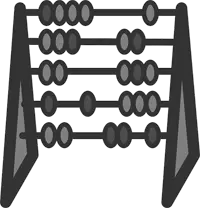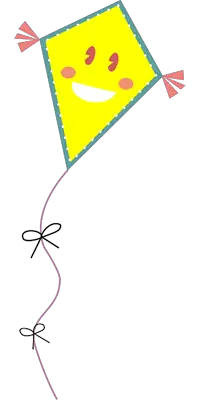Chinese Science
The history of science and technology in China is both long and rich with many contributions to science and technology. Various forms of sciences such as astronomy, physics, chemistry, meteorology, seismology, have originated from China.

 Early in 14th century BC, decimal or base ten system was first developed by Chinese. The first recorded observations of comets, solar eclipses, were made in China. The earliest inventions were abacus (this was a calculator that used sliding beads to help compute math problems quickly)., flying machines such as kites, Kongming lanterns and clocks.
Early in 14th century BC, decimal or base ten system was first developed by Chinese. The first recorded observations of comets, solar eclipses, were made in China. The earliest inventions were abacus (this was a calculator that used sliding beads to help compute math problems quickly)., flying machines such as kites, Kongming lanterns and clocks.
The clock was first devised for astronomical purposes. The first ever clock had a puppet which would hold up a plate that would tell the time. Also giant water clocks were invented which rang every 15 minutes.

List of inventions that took place in ancient China are as follows:
Compass:
This was for religious use. When a new house was being built, people used it to see if the house was faced in perfect harmony with nature. The compass was a wooden circle with markings on it, and a magnetic spoon on top.

Crossbow:
A crossbow is a bow set horizontally on a stock. When the shooter releases a mechanism, the crossbow fires arrows or bolts forced by the mechanical energy of previously stretched bowstring. In ancient times, it could be more powerful than the ordinary bow and could fire multiple arrows.

Seismoscope:
Zhang Heng invented the earthquake detecting tool called seismoscope. His seismoscope was a giant bronze vessel resembling a kettle almost 6 feet in diameter.
On the outside, the machine had eight dragons facing down marking the primary directions of the compass. In each dragon’s mouth was a bronze ball. And beneath the dragons sat eight bronze toads with their broad mouths gaping to receive the balls.
This was invented during the rule of Han dynasty.

Fan:
Fans were made of bamboo spines that stick out in the shape of a semicircle with silk wrapped around it. Fans were mostly used by women and soldiers.

Fireworks:
 Fireworks were actually bamboo cases filled with gunpowder with a fuse on the side. Fireworks were initially used only for shows. Later on they were used to scare off the enemies during the war. This invention took place during the rule of Tang dynasty.
Fireworks were actually bamboo cases filled with gunpowder with a fuse on the side. Fireworks were initially used only for shows. Later on they were used to scare off the enemies during the war. This invention took place during the rule of Tang dynasty.

Glider:
Kite which was invented in the 4thcentury B.C. by the Chinese had many practical uses. But it wasn’t until the sixth century A.D. that the Chinese put the kites to use as hang gliders, cutting the cord, as it were. The gliders were strong enough to sustain the weight of a man. The Chinese hang gliders initially were used for the amusement of emperors, who strapped captured enemies and criminals onto the gliders, forcing them to jump off cliff in terror.

Seed Drill:
Seed drills were used by farmers to plant seeds into the soil at uniform depth. Without this tool, farmers otherwise would toss the seeds with hands over the ground resulting in wastage and uneven growth.
Iron Plough:
This was one of the major developments in ancient Chinese agriculture. It was first developed in 4th century BC. Later on it was more popular and used commonly during the Han dynasty.

Harness for horses:
Harness is a set of straps by which a horse can be fastened to the cart. Throat harness was first invented. The drawback of the throat harness was that it presses the back on the neck, thus limiting the full strength of the animals. Later horse collar was invented. With this invention the horse could run faster than ox.

Kites:
 Kites were first invented in China during Chou dynasty. Kites were first made of bamboo and silk. Chinese people flew kites for fun and also during war to carry messages to signal people and also to carry explosives in besieged cities.
Kites were first invented in China during Chou dynasty. Kites were first made of bamboo and silk. Chinese people flew kites for fun and also during war to carry messages to signal people and also to carry explosives in besieged cities.
Gunpowder: By 300 AD, a Chin dynasty scientist named Ge Hong had written down the ingredients of gunpowder and described the explosion. Scientists made gunpowder by mixing sulphur, charcoal and potassium nitrate.
The reason gunpowder explodes is that it burns very fast, and when it burns it releases gases that are bigger in volume than the original powder. Gunpowder was used much later on during the reign of Tang dynasty. Chinese army used gunpowder in the form of rockets.
They put small stone cannonballs inside bamboo tubes and shot the cannonballs out by lighting gunpowder at one end.

Paper:
China also was first in inventing paper and printing. Their early script contained 80,000 different characters. They went on to invent books and had book shops in every city by the end of the Tang dynasty. There were 3 different kinds of paper, the first being silk rags.
The cheap kinds were the wooden strips, and the most expensive was silk cloth. Although most of the kinds of paper were made from over 50%bamboo, some of the other things they were made of were silk, cloth, hemp, mulberry bark, and plant fibres. Paper and ink were invented during Han dynasty. During Tang dynasty, the first printer was invented.

Porcelain:
This is made of special white clay which has lot of kaolin in it. The clay is put on fire at very high temperature. The temperature is kept so high that some of the clay melts and becomes shiny and translucent like glass. Porcelain was invented during the Sui Dynasty and perfected during the Tang Dynasty, most notably by Tao-Yue.

Boat Rudder – The rudder was invented to help steer large ships. This enabled the Chinese to build huge ships as early as 200 AD, well before they were ever built in Europe.

Silk:
Silk was made from the cocoons of silkworms. The Chinese managed to keep the process for making silk a secret for hundreds of years. Silk was a soft and light material much desired by the wealthy throughout the world. It became such a valuable export that the trade route running from Europe to China became known as the Silk Road.

Wheelbarrow:
 Wheelbarrows are basically hand driven vehicles with two handles on the rear side for a person to push ahead. It is mostly used in the Construction Industry. Wheelbarrows were in use in China right from the Ancient times during the Han dynasty. Chuko Liang is the inventor of wheelbarrow. Liang was a general who used the wheelbarrows to transport supplies and injured soldiers. The Chinese wheelbarrows had two wheels and required two men to drive and steer.
Wheelbarrows are basically hand driven vehicles with two handles on the rear side for a person to push ahead. It is mostly used in the Construction Industry. Wheelbarrows were in use in China right from the Ancient times during the Han dynasty. Chuko Liang is the inventor of wheelbarrow. Liang was a general who used the wheelbarrows to transport supplies and injured soldiers. The Chinese wheelbarrows had two wheels and required two men to drive and steer.

Other inventions included umbrella, iron casting, hot air balloon, matches, stirrups for riding horses, and acupuncture. A clear coating called lacquer was also made to protect and enhance certain works of art and furniture. Paper money was first developed and used in China during the Tang dynasty (7th century).


